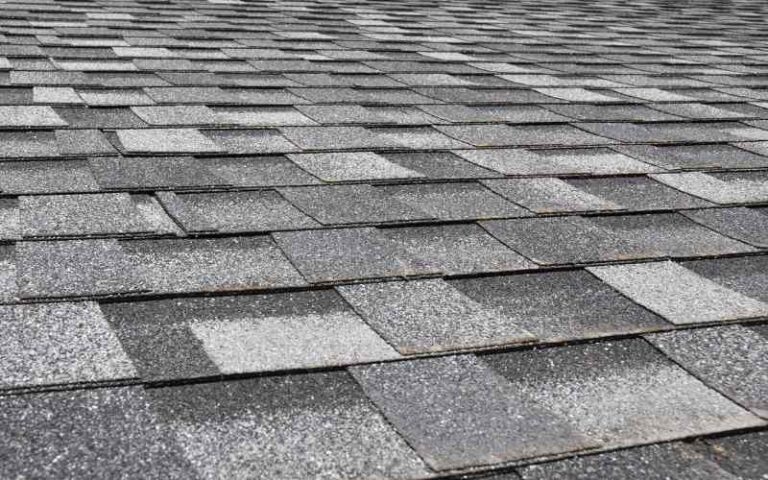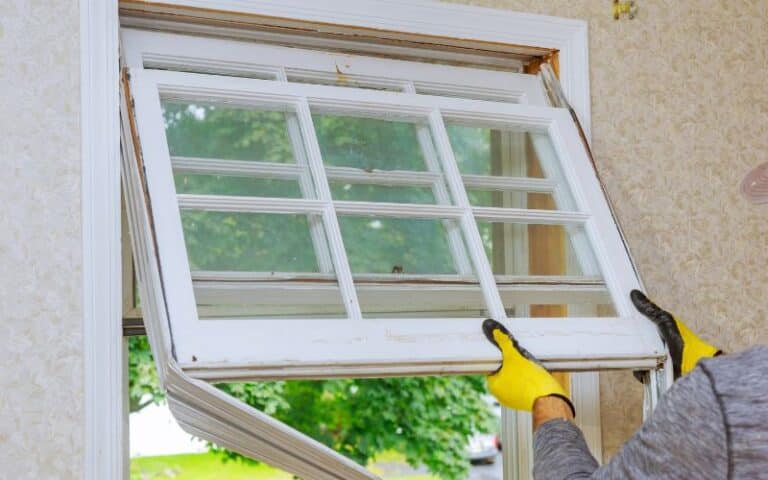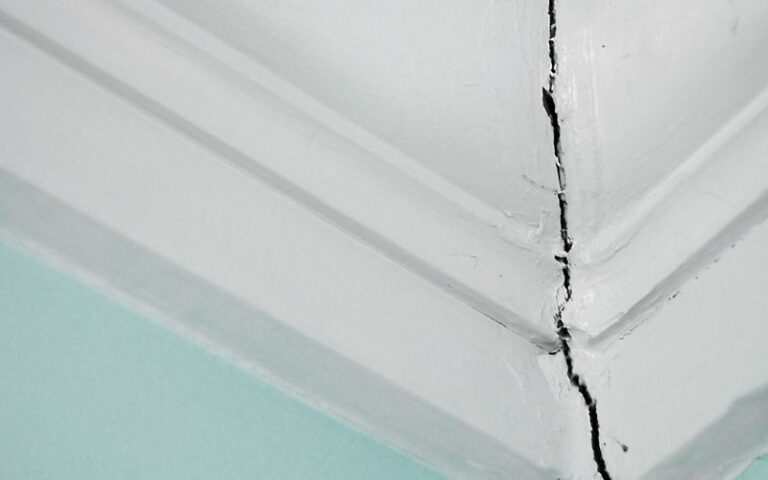A backsplash is a type of material in your kitchen or bathroom that can prevent water, stains, and materials from sticking to them.
The backsplash is necessary for areas with contact with water since they do not dissolve, preventing the wall from absorbing moisture.
Before applying the backsplash, consider whether you’ll want to use a backer board or drywall as the layer of the backsplash.
For walls where moisture is exposed a lot, the backer board is preferable to drywall. Backer boards can withstand a high amount of moisture compared to drywall which can only withstand a small amount of moisture for a short time. Since you don’t want your tiles falling off anytime soon, go for quality products that’ll last for a while
This article will explain everything you need to know about drywall and backer board. Ultimately, you’ll be able to choose the best one for your kitchen backsplash.
Ready for a Drywall Quiz?
Should You Use a Backer Board or Drywall for the Kitchen Backsplash?

Your kitchen is subjected to low moisture compared to the bathroom, so layers that can withstand moisture should be applied.
You need a waterproof layer to avoid your tile falling off due to moisture in the wall from the water in your kitchen.
Backer boards are waterproof boards used as a layer for placing your tiles to avoid moisture entering the wall.
A drywall is also a waterproof layer of cement used to minimize the absorption of water by the wall.
Although drywall also reduces moisture absorption, it is less efficient than the backer board since it has less waterproof ability than the backer board.
Fixing the backer board in the kitchen is a good idea, but you can also use drywall since the wall has less moisture exposure.
Drywall can withstand low moisture, unlike the backer board, which is completely waterproof and suitable for areas exposed to high moisture.
In the bathroom, where there’s more water exposure than in the kitchen.
Since there’s frequent use of water here, it is important to apply waterproofing to avoid the walls getting wet and the tiles falling off.
Applying a backer board to your kitchen backsplash is important as you wouldn’t want your kitchen walls to get wet because of the water.
Although only a little water is used in the kitchen, it is important since the walls can absorb water for a long time and deteriorate.
The backer board is a waterproof protective layer before applying your tiles to have a long-lasting wall.
There are various types of backsplash available in the market. And this backsplash is differentiated based on the material.
Below are some examples of backsplash materials available in the market.
#1. Ceramic Tiles
Ceramic tiles are a product of clay that has been subjected to high amounts of heat. This type of tile is widely used since it is less expensive, long-lasting, and durable.
The ceramic tiles come in different shapes and designs and can be used anywhere in your house.
#2. Porcelain Tiles
Porcelain tiles are similar to ceramic tiles in every way, but a few differences can be used to differentiate them.
Porcelain tiles are a product of finer clay than ceramic tiles, and porcelain tiles are exposed to higher heat than ceramic tiles.
It makes porcelain tiles more expensive than ceramic tiles.
#3. Glass Tiles
This type of tile is made out of glass, as the name implies. It has high water resistance and can last long.
Glass Tiles have less durability compared with ceramic tiles. Therefore, it needs an experienced person to fix it.
Handling it requires utmost care since breaking or injuring someone is easier. So it is for the kitchen, right behind the stove or sink.
#4. Metal Tiles
This type of tile is costly though easier to install and handle.
In addition, the metal tiles are stuck to the wall using adhesives, which only require professional attention and can be done by oneself.
The metal tiles come in a minimal variety of designs and shapes and are in some homes and offices and fancy tiles.
It has a very high water resistance. Unfortunately, the tile is susceptible to scratches from Sharon’s objects and may get old or not good-looking with time.
Also, metals do not react well with acids and their components. Since some foods are acidic, it might cause a reaction that is not favorable.
#5. Thermoplastic Tiles
Thermoplastic tiles look more like metals and, at the same time, look like plastic. It is made to look like metal tiles but with lesser quality than metal tiles.
This type of tile is easy to install and cut since it is not as thick as metals and can be cut with scissors.
Thermoplastic tiles are cheaper than metal tiles and have high water resistance.
But this will only last a while compared to the metal tiles, even the ceramic ones. So if you’re looking for something that’ll take you a very long time, going for this is not advisable.
#6. Travertine Tiles
It Looks more like a natural stone. However, it has a rough surface, is very expensive, and is mostly used as a decor tile.
This tile is manufactured out of limestone. It takes work to install and manage.
It requires high maintenance since it is not stain resistant like the glass tiles. In addition, with time, these tiles may lose their color and will no longer look good to the eyes.
#7. Veneer Tiles
Veneer is manufactured out of stone. As a result, a veneer is an expensive choice for tiles and is very difficult to handle.
It requires professional attention to install and handle. Veneer Tiles also need high maintenance.
Since they absorb moisture, they can absorb oils and even food spills, which may discolor if not cleaned immediately.
Consider some important factors before choosing a backsplash for your kitchen or anywhere in your house.
#8. Cost
You have to know your budget before going for tiles. Ceramic tiles are more advisable if you’re going for a low-budget tile.
Although they are not high in water resistance compared to glass, metal, or thermoplastic tiles and can absorb very little water, they are very durable.
If you have a high budget, stone tiles are perfect since they are very fancy. But less durable and can get stained easily.
#9. Durability
In terms of durability, ceramic tiles are the best without any competition. They last long and are relatively easy to apply.
Glass tiles are less durable and can break or injure you at any chance and, thereby, can only be installed by a professional.
#10. Ease of Installation
In terms of ease of Installation, metal tiles and thermoplastic tiles are the best options since they are easy to install.
Glass tiles are difficult to install, similar to stone tiles, and are a terrible option if you’re looking for an easy one.
Instead, consider where you plan to install the tiles and why you want to install them. Choose those that match your perception and taste if you like fancy tiles.
What Kind of Drywall Do You Use for Kitchen Backsplash?
Using drywall for your kitchen, ensure the wall is very smooth so the tiles can stick well, or they might fall off with time.
Cement drywall is good for layering backsplash since it’ll help the tiles stick better with cement drywall.
Ensure you use enough cement and avoid minimizing cement when you’re applying the backsplash.
Minimizing cement can reduce the lasting duration of the backsplash as it can get worn out with time, crack, or even fall out with time.
What Is the Best Backer Board for the Kitchen Backsplash?
There are various types of backer board used for the backsplash, and they are as follows;
#1. Cement Backer Board
Made from cement, and is a good type of backer board with less cost than other types. Some are smooth, while some are made rough.
#2. Fiber Backer Board
They are made from recycled materials such as plastic or glass fibers. They are also combined with resin.
They are high in moisture resistance and can contain noise in a room without being heard from the outside.
This type of backer board is good for backsplash since it is also moisture resistant and will last long.
#3. Gypsum Board
Made out of gypsum and is very good for moisture also. It is also used where heavy materials are used since it only wears out slowly.
The fiber backer board and gypsum board are good options for a backsplash. But if your budget is small, go for the cement backer board.
The table below contains the differences between backer board and drywall;
| Backer Board | Drywall |
|---|---|
| Have high moisture resistance. | Low resistance to moisture compared with the backer board. |
| They are more expensive than drywall. | Less expensive. |
| Mostly used in areas exposed to high moisture. | Used in areas with exposure to low moisture. |






